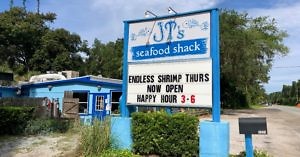How – and when – should people with early stage breast cancer be treated with a PARP inhibitor?
We’re going to take a change of pace from our scientific previews from the forthcoming AACR meeting and switch to early stage cancer clinical trials readouts coming out this week.
 The first one on deck is an update of the OlympiA trial exploring the PARP inhibitor olaparib as adjuvant therapy after chemotherapy in early stage germline BRCA mutation-positive (gBRCAm) high-risk breast cancer.
The first one on deck is an update of the OlympiA trial exploring the PARP inhibitor olaparib as adjuvant therapy after chemotherapy in early stage germline BRCA mutation-positive (gBRCAm) high-risk breast cancer.
This is an important trial to follow given it’s the first of the PARPs to read out in early stage breast cancer in a well defined patient population with a high risk of disease recurrence.
Here, we explore the pros and cons of the latest findings and also put them in context since there’s quite a few important nuances to consider…
BSB subscribers can read our latest commentary – you can either log-in or click to access.
This content is restricted to subscribers
 There are at seemingly endless genes associated with genomic instability and the development of cancer – there are at least 450 genes associated with DNA Damage Repair (DDR) alone, for example.
There are at seemingly endless genes associated with genomic instability and the development of cancer – there are at least 450 genes associated with DNA Damage Repair (DDR) alone, for example.

 Resilience in purpose and openess in strategic direction are key dual features in the DNA of strong biotechs which succeed in the long run and live to survive the roller coaster ride that is oncology R&D.
Resilience in purpose and openess in strategic direction are key dual features in the DNA of strong biotechs which succeed in the long run and live to survive the roller coaster ride that is oncology R&D.



